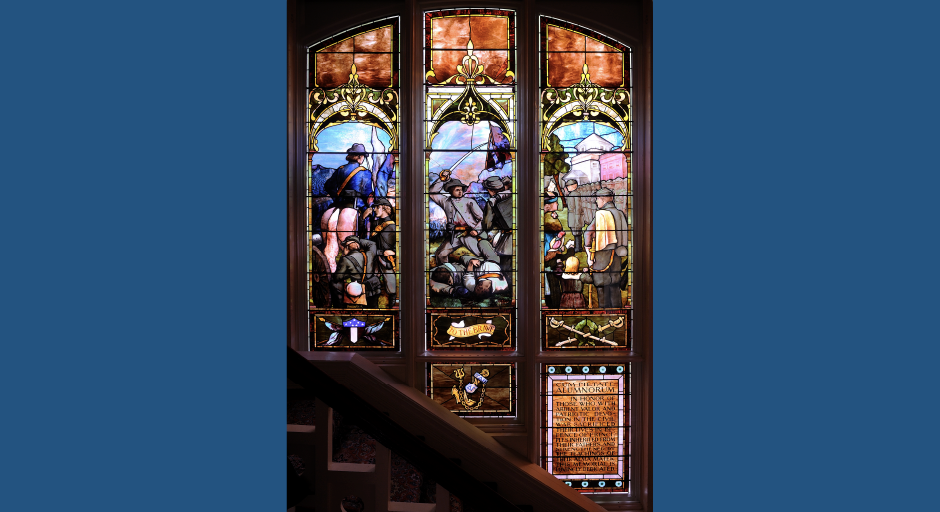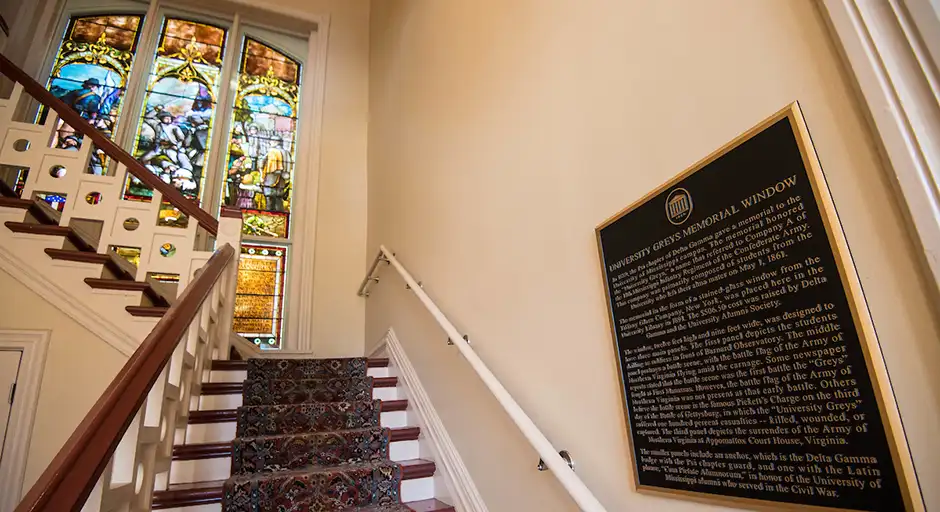Ventress Hall
Learn about this beautiful, historic building on campus.

History
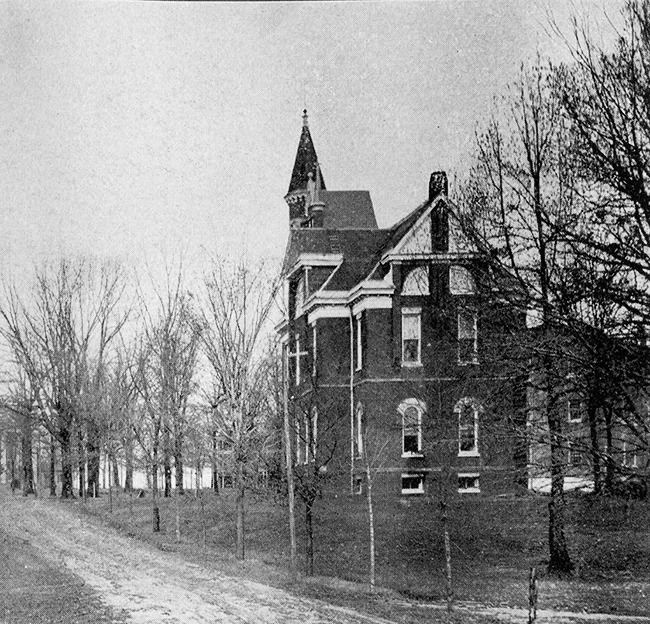
Construction
Constructed in 1889 at a cost of $35,000, Ventress Hall served first as the University library and then housed the School of Law from 1911 to 1929. It was used by the State Geological Survey from 1929 to 1963, and then was assigned to the Department of Geology. Thereafter, it was used as a classroom facility and, from the 1970s, for the Department of Art & Art History.
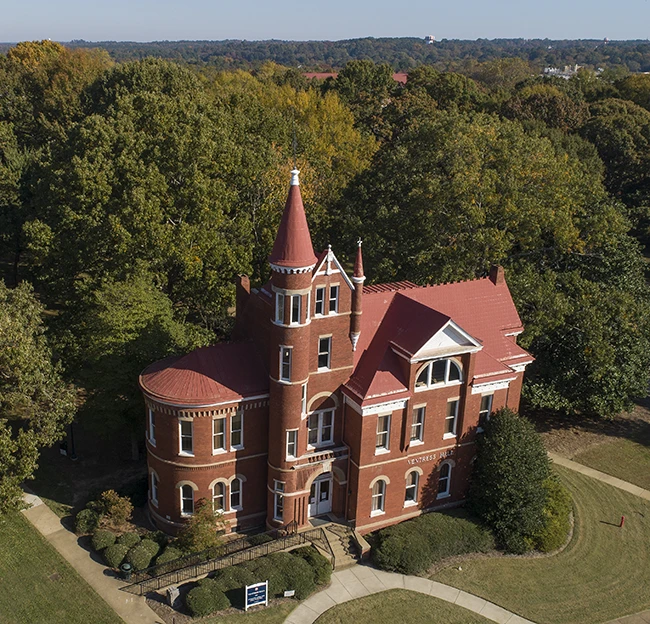
Restoration
In 1993, the State Legislature appropriated approximately $1 million in capital improvement funds for the restoration of Ventress Hall. When the restoration was completed in March 1998, Ventress Hall became the home of the Dean's office in the College of Liberal Arts.
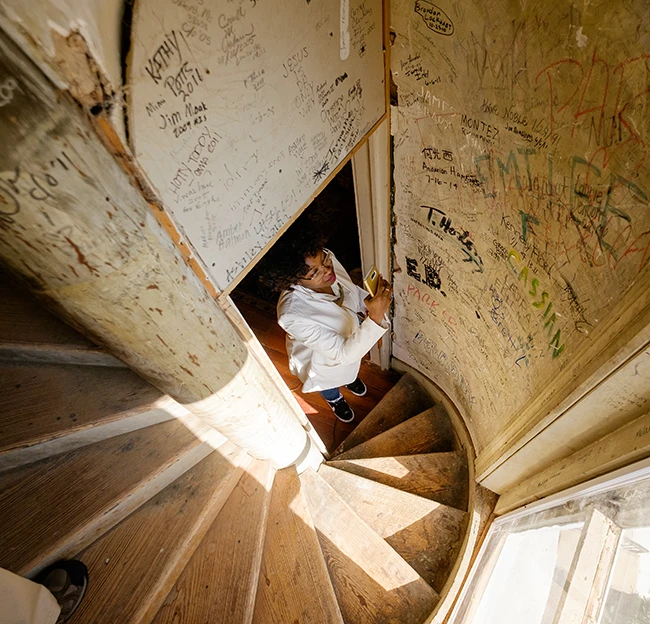
Graffiti
During the earliest years of the School of Law's residency in Ventress Hall (1911 to 1929), student graffiti began to appear on the interior walls of the building’s turret. An elderly Civil War veteran from Arkansas scrawled his name and military unit near the top of this tower after the turn of the century, and hundreds of students left their mark on the walls in the following decades.
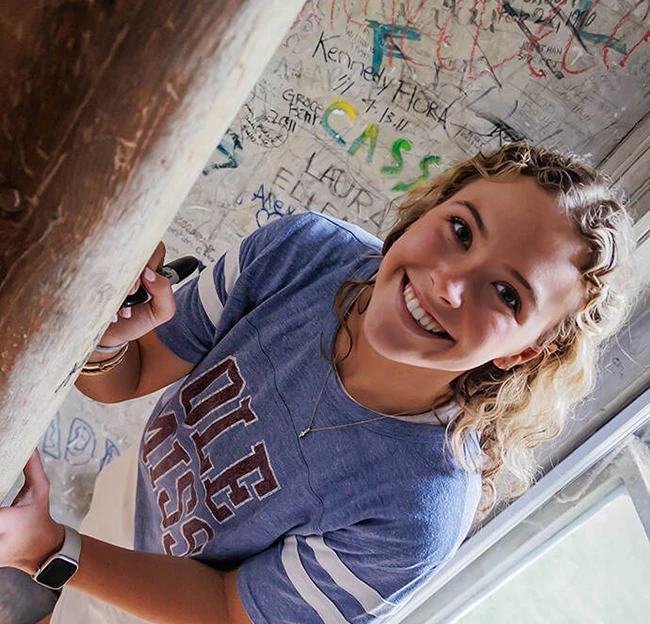
Turret Signatures
While renovations of the building restored Ventress Hall to its original Victorian splendor, this area was left alone (and closed off), allowing the memories to live on. Currently, a small number of CLA students are randomly selected to sign the turret from among those who participate in the annual Giving Day in support of the College.
University Contextualization
UM Chancellor Jeffrey Vitter said that as Mississippi's flagship university, UM has long been committed to honest and open dialogue about its history. The Chancellor's Advisory Committee on History and Context's work culminated with the unveiling of new markers on campus, including the window in Ventress Hall.
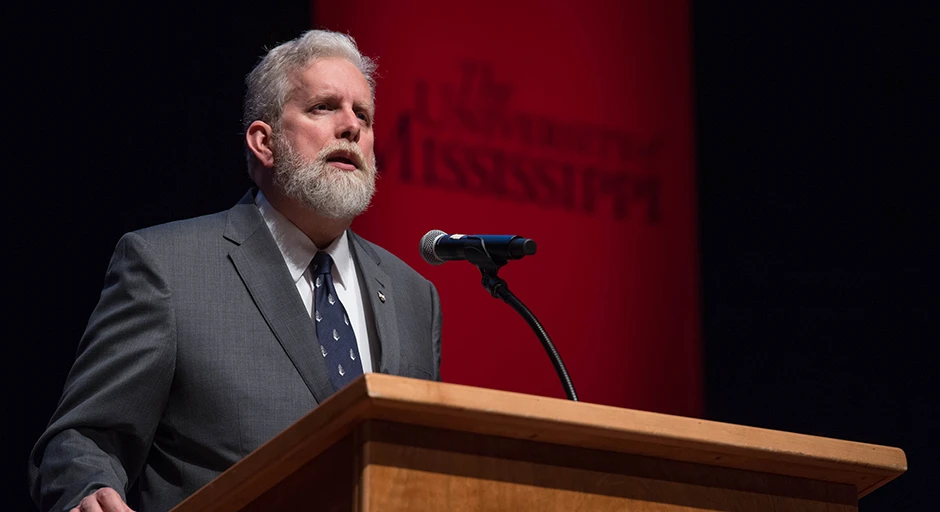
In the ceremony on March 2, 2018, Dr. John Neff (pictured above), associate professor of history and director of the Center for Civil War Research, said the university was at a crossroads, a space in which many cultures around the world place great significance. Crossroads can be difficult, mysterious and perhaps even dangerous, he said. The contextualization represents a bold step forward.
"Crossroads have come to represent many things to many people, but for today, simply think of crossroads as points of decision," Neff said. "The university, as a community, is the sum of its decisions and many more – all the crossroads in its lifespan. Making choices about which path to travel is not always easy, but history records those decisions."
The markers contextualize parts of the university's history and acknowledge its indebtedness to the enslaved laborers who built the campus, he said. The plaques also present narratives of the lives of men who influenced the direction of decisions made throughout history. One provides context for the creation of a century-old tribute to the University Greys.
"Thus, as we confront today's crossroad, accompanied by the perspective permitted by both history and memory, we also acknowledge that the decisions made in the past are not our decisions today," Neff said. "By contextualizing these important aspects of our campus, we emphasize the distance we have traveled between our time and theirs, all the crossroads through which we have passed. It is only a step, but we take it with pride, carrying with us our past, rejoicing in our present and in eager anticipation of all the crossroads of our future."
Contextualization Plaque
In 1889, the Psi chapter of Delta Gamma gave a memorial to the University of Mississippi campus. The memorial honored the "University Greys," a name that referred to Company A of the 11th Mississippi Infantry Regiment of the Confederate Army. This company was primarily composed of students from the University who left their alma mater on May 1, 1861.
The memorial in the form of a stained-glass window from the Tiffany Glass Company, New York, was placed here in the University Library in 1891. The $506.50 cost was raised by Delta Gamma and the University Alumni Society.
The window, twelve feet high and nine feet wide, was designed to have three main panels. The first panel depicts the students drilling as soldiers in front of Barnard Observatory. The middle panel portrays a battle scene, with the battle flag of the Army of Northern Virginia flying amid the carnage. Some newspaper reports stated that the battle scene was the first battle the “Greys” fought at Manassas. However, the battle flag of the Army of Northern Virginia was not present at that early battle. Others believe the battle scene is the famous Pickett’s Charge on the third day of the Battle of Gettysburg, in which the "University Greys" suffered one hundred percent casualties—killed, wounded, or captured. The third panel depicts the surrender of the Army of Northern Virginia at Appomattox Court House, Virginia.
The smaller panels include an anchor, which is the Delta Gamma badge with the Psi chapter guard, and one with the Latin phrase, "Cum Pietate Alumnorum,"* in honor of the University of Mississippi alumni who served in the Civil War.
*The translation of CUM PIETATE ALUMNORUM: "With the gratitude of the alumni" or "With the devotion of the alumni."

